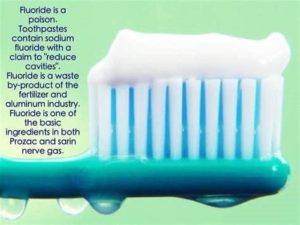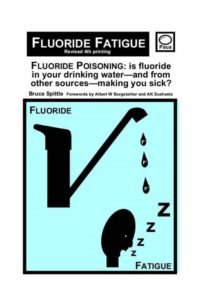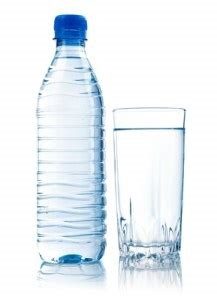In this series, you’ll find two previous blogs on Fluoride: What Do You Need to Know? and Fluoride – Let’s Dive Deeper.
Having read these first two blogs, you may now be wondering:
- How Fluoride Is Added to Drinking Water?
- Do I Live in A Fluoridated Community?
- How Can I Avoid and Detox from Fluoride?
We’ll also cover: “A Word on Water Filters” and “Is fluoridated water the only major source of toxic fluoride exposure?”
 How Fluoride Is Added to Drinking Water?
How Fluoride Is Added to Drinking Water?
Fluoride is added to drinking water supplies at water treatment plants. This process is carefully controlled and monitored. Monitoring also occurs at the tap to ensure compliance with drinking water guidelines.
Fluoride plants are incorporated in each water treatment plant’s risk management plan and are managed in Australia in accordance with the Safe Drinking Water Act 2003. Australia’s peak health body, the National Health and Medical Research Council (NHMRC), specifies sodium fluoride, sodium fluorosilicate, and fluorosilicic acid as suitable fluoridation compounds
Do You Live in A Fluoridated Water Community?
The natural amounts of fluoride present in water should be 0.05 mg per litre. However, the amount in fluoridated water may be anywhere from 0.7- 1.3 mg/L, often expressed as “ppm” or parts per million. These high levels in fluoridated communities are a stark contrast to healthy levels. Depending on the country and area you live in your tap water fluoride concentrations will fluctuate.
If you live in America, you can find out how much fluoride is in your local water supply by entering your location on the Centre for Disease Control and Preventions fluoride page. Another good way is to visit your water provider’s website or to contact them. In 2018, 73.0% of the US population on community water systems, or 207,426,535 people, had access to fluoridated water. If you live in the typical fluoridated community and you’re drinking your 8 cups of water each day, chances are, you are inadvertently taking in enough fluoride to suppress your thyroid. Most adults in these communities are ingesting between 1.6 and 6.6 mg of fluoride per day.
In Victoria, Australia, the maximum level of fluoride in drinking water is 1 milligram per litre (mg/L), or 1 part per million (ppm), as recommended by the World Health Organization (WHO). Artificially fluoridated drinking water is provided for over 70% of the population in all states and territories across Australia. Sydney water has fluoride in 99% of all local tap water supplies. For a specific contact list for Australia please see the Resource List at the end of this blog.
Interestingly a 2015 British study reported that medical practices in a fluoridated area of the UK (West Midlands vs. those in a non-fluoridated area, Greater Manchester) were TWICE as likely to report a high prevalence rate of hypothyroidism in their patients. Furthermore, an analysis of different parts of the UK found that the rates of hypothyroidism were statistically matched to the rates of fluoride in the local water supply.1
The article reported the following average rates of fluoride in fluoridated communities. These levels may have since increased:
- England 1.0 mg/L
- Canada 0.7 mg/L
- Southern Ireland 0.7 mg/L
- United States 0.7 – 1.3 mg/L
 How Can You Avoid and Detox from Fluoride?
How Can You Avoid and Detox from Fluoride?
As we have discussed with our other blogs fluoride is deemed to be non-toxic in small quantities and is considered relatively safe for public consumption. What many health professionals are concerned with, however, is just how abundant fluoride is now in our current everyday life and how our body interacts with it.
Fluoride has a very cumulative nature once inside the body, in fact only 50% of fluoride is excreted via the kidneys, the remaining fluoride accumulates in our bones and glands2. It seems likely that even exposure to relatively small doses of fluoride can have adverse effects on your health.
Michael Barbee, the author of Politically Incorrect Nutrition; Finding Reality in the Mire of Industry Food Propaganda, goes as far as to say that fluoride is one of the most toxic substances on earth, on par with arsenic and lead.
“There is no minimum daily requirement for fluoride. What is not excreted collects in the teeth and bones, making them dense, but brittle. Those little white spots visible on the teeth of about 25 percent of American children are called dental fluorosis, a condition which not only predisposes them to decay but also provides a sign that systemic fluoride poisoning is taking place.”
“Not only are the teeth of children with those spots damaged, but this fluorosis also indicates that their thyroid glands are being negatively impacted. Increasing rates of learning problems and hyperactivity among American children are thought to be traced in part to thyroid problems, which can be linked to intakes of fluoride.”3
Obviously the first step in detoxing from fluoride is to eliminate all sources of exposure. This may sound straightforward however there are far more items that contain fluoride than you might assume. The next step after elimination is to increase the effectiveness of the detox.
Let’s take a look…
What to eliminate:
Tap water: This is the single most important source of fluoride to circumvent.
Fluoride can certainly be taken out by filters — but not just any filters. Fluoride can be removed by distilling the water, using reverse osmosis filtration systems, or by using activated alum in defluorination filters. Most other types of filters do not remove fluoride.
A Word on Water Filters
Are there filters I can purchase to eliminate fluoride from tap water?
You will need to research filtration systems and what’s available in your country for yourself as they vary from country to country. Some are also far more expensive than others.
While the most common water filters, including Brita & Pur, do NOT remove fluoride from tap water, both reverse osmosis filters and steam distillation units do.
Reverse osmosis is by far the most popular method of eliminating fluoride. Reverse osmosis (R/O) filters can be found at many home improvement stores, including Home Depot, or at a variety of sites online. If you’re not a do-it-yourself-er, just look up “Water Filtration & Purification Equipment” online and call around to get price quotes from companies in your area that can install and service this type of filter for you.
Similarly, steam distillers, from which distilled water can be made, are another popular method of eliminating fluoride from tap water. Home distillation units are available through a variety of sites online.
Here’s some information on a few options:
One of the most convenient and cost-effective reverse osmosis water filters available is AquaTru’s countertop filter. It’s easy to set up (no plumber required!) and is a great option for those who rent or reside in places where you can’t adjust the plumbing.
Waters Co is an excellent brand. It was the first to market with natural gravity-fed systems creating alkaline mineral water way back in 1984 and have continued to lead the market in research and development setting the benchmark for all other brands to follow. Part of our new line of filter systems offering 99.9% fluoride removal. The BIO 1000 is the latest edition of the BMP 1000 model and the culmination of over 40 years of experience and research into water filtration by some of the world’s leading scientists. They also have water filter jugs.
Clearly Filtered is another company that produces a variety of filtration systems, including water pitchers, showerheads, and under-the-sink filters, that are able to remove up to 99 percent of fluoride from the water. Their website provides links to independent testing results (from EPA-accredited laboratories) that show the levels of contaminants their products are able to remove from one’s water source.
Another option is having a plumber or handyman install an under the sink reverse osmosis unit. These typically cost around $200 and provide a consistent, daily source of water without fluoride.
At home, we use a system called Puretec which is an under bench reverse osmosis water treatment. A patient installed it within a few hours so if you’re in Melbourne you may like to connect with Joel at Project Plumbing Australia.
 Where can I purchase distilled or reverse osmosis bottled water?
Where can I purchase distilled or reverse osmosis bottled water?
Most grocery stores sell bottled distilled and reverse osmosis filtered water. Reverse osmosis bottled water (i.e. Aquafina, Dasani) is usually found in the beverage department in specific brands processed using R/O filtration, or in the form of refilling stations provided by some grocery stores.
Distilled water is often found in the cleaning supply aisle of grocery stores because of its use in irons, which tend to corrode when using tap water.
Is fluoridated water the only major source of toxic fluoride exposure?
No. The biggest threat of developing chronic fluoride poisoning for some people may actually stem from fluoride-based prescription drugs, such as fluorinated antibiotics like Cipro. Although prescription drugs don’t contain large amounts of fluoride, Andreas Schuld, Founder, Parents of Fluoride Poisoned Children (PFPC) says that,
“the forms of fluoride are, in some cases, so toxic they can induce chronic fluoride poisoning following extended or repeated use.”
Prescription drugs that contain fluoride: Prescription drugs with “FL” in their chemical name typically reference fluoride as an ingredient. However, since other drugs may contain fluoride as well, it is a good idea to look up the specific chemical makeup of medications online at a site like… www.rxlist.com
Fluoride-Containing Medications4 – There are quite a few fluorine-containing medications. They include:
- anesthetics,
- antacids,
- anti-anxiety medications,
- antibiotics,
- antidepressants,
- antifungals,
- cholesterol-lowering medications,
- anti-malarial medications,
- chemotherapy,
- appetite suppressants,
- arthritis medications,
- psychotropics,
Some of the most commonly used brands of medications that contain fluoride include:5
- Prozac®, Lexapro®, Celexa®, Paxil®: used for depression, anxiety, or OCD
- Prevacid®: used for acid reflux
- Diflucan®: an antifungal used for yeast infections
- Fluoroquinolone antibiotics (Cipro®, Levaquin®, Avelox®): used for UTIs and other infections
- Celebrex®: used for pain
- Lipitor®, Zetia®: used to lower cholesterol
 Toothpaste: Probably the most obvious one to eliminate first with alarming levels of fluoride ranging from 1000 ppm to 1500 ppm2. There is plenty of fluoride-free toothpaste you can buy that isn’t too pricey. Remember that the majority of the cleaning comes purely from the friction of brushing. Mouthwash and other dental hygiene products also contain fluoride.
Toothpaste: Probably the most obvious one to eliminate first with alarming levels of fluoride ranging from 1000 ppm to 1500 ppm2. There is plenty of fluoride-free toothpaste you can buy that isn’t too pricey. Remember that the majority of the cleaning comes purely from the friction of brushing. Mouthwash and other dental hygiene products also contain fluoride.
Tea and coffee: Unfortunately, your cup of red or black tea could be sabotaging your thyroid. Tea leaves accumulate fluoride from the soil, as well as from pollution. The longer they stay on the tea tree, the heavier the fluoride content. (Thus, black tea has more fluoride compared to other teas.) An article published in the journal Food and Chemical Toxicology reported that there can be up to 4.5, 1.8, and 0.5 mg/L of fluoride in black, green, and white teas, respectively, when brewed for five minutes.6
Make sure when drinking your coffee and teas that you are only using your filtered fluoride-free water, keep this in mind when buying take away coffee. Naturally black and green teas have adequate levels of fluoride in them so avoid consumption of these while detoxing. If you’re an avid tea drinker, opt for white tea (yes, it’s a thing) or herbal teas instead of black and red teas.
Coffee has less fluoride than tea, but it should still be approached with caution. It is recommended to use Robusta and Arabica beans as these have lower levels of fluoride.
Non-stick cookware: Cookware that is advertised as ‘non-stick’ contains fluoride and can leach into your food during use. Substitute this cookware for things made of cast-iron or stainless steel.
Foods high in fluoride: For the purpose of the detox foods such as potatoes, grapes, raisins, wine, and spinach should be avoided. Other sources here include black/red rock salt and bottled beverages (due to fluoride content in water)
Once the detox is finished consumption of these foods can continue as long as you continue to cut out your major fluoride sources e.g. tap water and toothpaste.
Chewing tobacco: If you’re reading this article on fluoride, we don’t imagine you chewing tobacco, but we’ll throw in this reminder that tobacco contains fluoride too.
 Infant Formula made with fluoridated tap water: As discussed in our previous blog.
Infant Formula made with fluoridated tap water: As discussed in our previous blog.
Fluoride Based Pesticides: As the active poison in some of the most toxic pesticides that currently exist, fluoride impacts us this way as well. We have a series of blogs on Glyphosate which is found in the notorious pesticide RoundUp®, make sure you have a read.
How to increase effectiveness:
Exercise: Nothing beats firing the cardiovascular system up and breaking a sweat. Along with the copious amount of benefits you reap from exercising, sweating is a great way to remove toxins from the body in a natural and safe way.
Diet: Foods that are great to consume during your detox would be; foods high in antioxidants, spices, herbs, and whole foods or organic foods. It is important to consume organic food during this period of detox as the pesticides used on ‘non-whole’ foods contain fluoride.
Vitamins, minerals & supplements: While stopping your intake of fluoride is an excellent first step, you can also take additional measures to help your body counter the negative effects of excessive levels of fluoride.
- Iodine: Due to iodine’s electronegativity it appears to compete with fluoride and may displace it thus increasing its excretion. Many therefore believe that iodine is especially effective for detoxing the thyroid and a great natural source of iodine is seaweed. Some health practitioners caution against using iodine to help the body remove fluoride particularly those with Hashimoto’s. A recent study of the effects of fluoride, combined with iodine on the thyroid gland, showed that excessive fluoride and excessive iodide have detrimental effects on human thyroid cells, resulting in cytotoxicity – AKA the death of thyroid cells.7
- Liver supportive supplements: Izabella Wentz, PharmD, FASCP suggests that liver supplements are a safer way to support your body’s detoxification from fluoride, especially those that contain taurine. Taurine is a sulfur-containing amino acid that is involved in a diverse array of biological and physiological functions, including bile salt conjugation, body fluid regulation, calcium modulation, anti-oxidation, and immune system regulation. Recent studies have demonstrated the ability of taurine to reverse both kidney and thyroid damage in rats that were chronically exposed to high levels of fluoride. Another study has shown taurine to reduce thyroid damage from exposure to lead and industrial insecticides. The beneficial effects of taurine may be attributed to its ability to protect the body from toxicity and oxidative stress.
- GABA: Is another ingredient that can help us clear out fluoride. GABA is a naturally occurring neurotransmitter that is known to produce calmness, as well as reduce tension and anxiety. Recently, GABA has also been shown to have the ability to protect against hypothyroidism caused by fluoride. A study that exposed mice to fluoride and was subsequently treated with GABA showed improved T4, T3, and thyroid hormone-binding globulin (TBG levels) results, along with healing of the structural abnormalities in thyroid follicles that were observed after fluoride exposure.
- Resveratrol: a natural antioxidant may also help. A recent study was performed on rats that were given high doses of fluoride and exhibited symptoms of thyroid dysfunction. Resveratrol supplementation in the fluoride-exposed rats prevented fluoride toxicity and restored thyroid function to a normal range.8
- Calcium: known for its properties in fighting fluoride. It is also very important for maintaining and developing bones. Vitamin D is needed for calcium absorption.
- Magnesium: Important for the development of bones and cartilage. Also acts as a co-factor for over 300 enzymatic reactions which is helpful because fluoride is known to diminish enzymatic activity, especially in the thyroid.2
- Vitamin C: It is a potent antioxidant and is used in the formation of collagen which is essential for bone and cartilage development.
- Tamarinds: Elevates the excretion of fluoride via urination.
- Boron: Similar to the effects of iodine, boron competes with fluoride but more localised to the skeletal bones.
While it’s important to stay informed on how much fluoride you are being exposed to, it’s encouraging to know that there are a lot of great action steps that you can take to protect yourself from excess fluoride. Installing a quality water filter, avoid medications, dental products, foods, and beverages that contain high amounts of fluoride are easy ways to avoid unnecessary fluoride exposure.
Although the actual time frame of a fluoride detox is unknown, adult bones restructure by about 10% every year. You may want to keep to a strict detox including supplements and dieting for a month or so but the most important thing to do is eliminate fluoride exposure. Your body has the power to heal and rebalance itself given the opportunity!
RESOURCE LIST
Three of the best resources for this on the Internet are:
Parents of Fluoride Poisoned Children
For Information Regarding Fluoride Levels In Australia, Please See:
- Western Australia
The Western Australian Health Department can be contacted on 08 9388 4999.
- Northern Australia
Northern Australia is a territory with a wide array of public bodies that serve individual regions. Visit the Department of Health for the Northern Territory Government website to find out more.
- Queensland
For contact details for The Queensland Government Department of Energy and Water Supply, follow this link.
- South Australia
South Australia water supplies’ fluoride concentrations are maintained in line with the recommended levels set out by SA Health. Detailed information about this can be found in their 2013-2014 Drinking Water Quality Report. South Australia’s water entities are publicly owned and known as the business entity SA Water. You can contact them via the SA Water contact page.
- New South Wales
You can read South Wales’ guidance on the Fluoridation of Drinking Water here.
New South Wales adopt a robust approach to the monitoring of all water chemicals. More information on this can be found on the NSW Drinking Water Monitoring Program. You may also contact the NSW Ministry of Health via their contact page.
- Victoria
Victoria has recently revised its Safe Drinking Water Regulations – you can read more about this here. Victoria also undertakes an annual report of the water quality throughout the state. Download the 2014-2015 report here.
Should you have concerns about your water supply in Victoria, you can contact the government’s dedicated department for their water program on 1300 761 874 (during business hours); on pager: 1300 790 733 (which is a 24-hour pager service for public health emergencies) or by email: water@dhhs.vic.gov.au
Yours in health,
Jennifer Barham-Floreani,
Bach. Chiropractic, Bach. App Clinical Science
Registered internationally, no longer practicing as a chiropractor in Australia.
Harry Brundell,
Research Assistant & Student
Barcelona College of Chiropractic
References:
1. Peckham S, Lowery D, Spencer S. Are fluoride levels in drinking water associated with hypothyroidism prevalence in England? A large observational study of GP practice data and fluoride levels in drinking water. Journal of Epidemiology and Community Health. 2015;69(7):619-624. doi:10.1136/jech-2014-204971.
2. Krol C. 8 Ways I Detoxed My Body From Fluoride (100% Scientific) [Internet]. Truth About Fluoride. 2020 [cited 15 August 2020]. Available from: https://truthaboutfluoride.com/fluoride-detox/
3. Barbee, M. (2004). Politically incorrect nutrition: Finding reality in the mire of food industry propaganda. Ridgefield, CT: Vital Health Pub.
4. Wentz I. Fluoride And Your Thyroid – Dr. Izabella Wentz [Internet]. Thyroid Pharmacist. 2020 [cited 15 August 2020]. Available from: https://thyroidpharmacist.com/articles/fluoride-and-your-thyroid/
5. https://www.slweb.org/ftrcfluorinatedpharm.html
6. Malinowska et al. (March 2008). Assessment of fluoride concentration and daily intake by human from tea and herbal infusions. Food Chemical Toxicology
Yim J & Cao, J (February 2008). Tea and fluorosis. Journal of Fluorine Chemistry
7. Liu H, Zeng Q, Cui Y, Yu L, Zhao L, Hou C, et al. The effects and underlying mechanism of excessive iodide on excessive fluoride-induced thyroid cytotoxicity. Environ Toxicol Pharmacol. 2014;38(1):332-40. doi: 10.1016/j.etap.2014.06.008.
8. Sarkar C, Pal S. Ameliorative effect of resveratrol against fluoride-induced alteration of thyroid function in male wistar rats. Biol Trace Elem Res. 2014;162(1-3):278-87. doi: 10.1007/s12011-014-0108-3.
9. Green R, Lanphear B, Hornung R, et al. Association Between Maternal Fluoride Exposure During Pregnancy and IQ Scores in Offspring in Canada. JAMA Pediatr. 2019;173(10):940–948. doi:10.1001/jamapediatrics.2019.1729\
10. Bashash M, Thomas D, Hu H, et al. 2017. Prenatal Fluoride Exposure and Cognitive Outcomes in Children at 4 and 6–12 Years of Age in Mexico.
11. Foley, M. Fluoridation and hypothyroidism – a commentary on Peckham et al. Br Dent J 219, 429–431 (2015).
12. Fluoride Action Network | Pineal Gland [Internet]. Fluoridealert.org. 2020 [cited 15 August 2020]. Available from: https://fluoridealert.org/issues/health/pineal-gland/
13. Anderson A. Side Effects of Melatonin: What Are the Risks? [Internet]. Healthline. 2020 [cited 15 August 2020]. Available from: https://www.healthline.com/nutrition/melatonin-side-effects
14. Sargis R. An Overview of the Pineal Gland [Internet]. EndocrineWeb. 2020 [cited 15 August 2020]. Available from: https://www.endocrineweb.com/endocrinology/overview-pineal-gland
15. Kheradpisheh, Z., Mirzaei, M., Mahvi, A. H., Mokhtari, M., Azizi, R., Fallahzadeh, H., & Ehrampoush, M. H. (2018). Impact of Drinking Water Fluoride on Human Thyroid Hormones: A Case- Control Study. Scientific reports, 8(1), 2674. https://doi.org/10.1038/s41598-018-20696-4
16. Aniys A. Super Method To Detox Fluoride From The Body | Alkaline Plant Based Diet [Internet]. Alkaline Plant Based Diet. 2020 [cited 15 August 2020]. Available from: https://www.naturallifeenergy.com/super-method-to-detox-fluoride-from-the-body/






